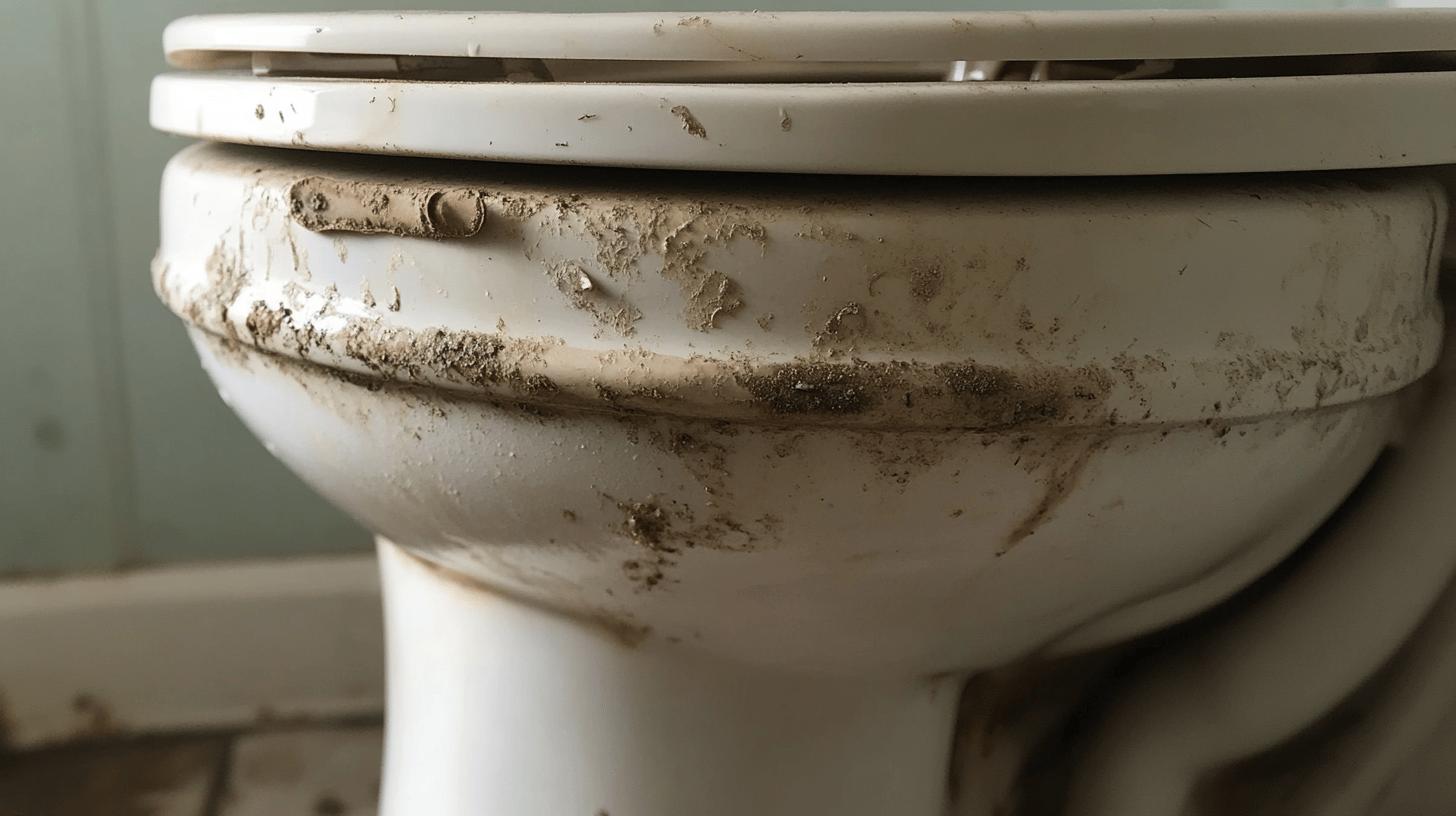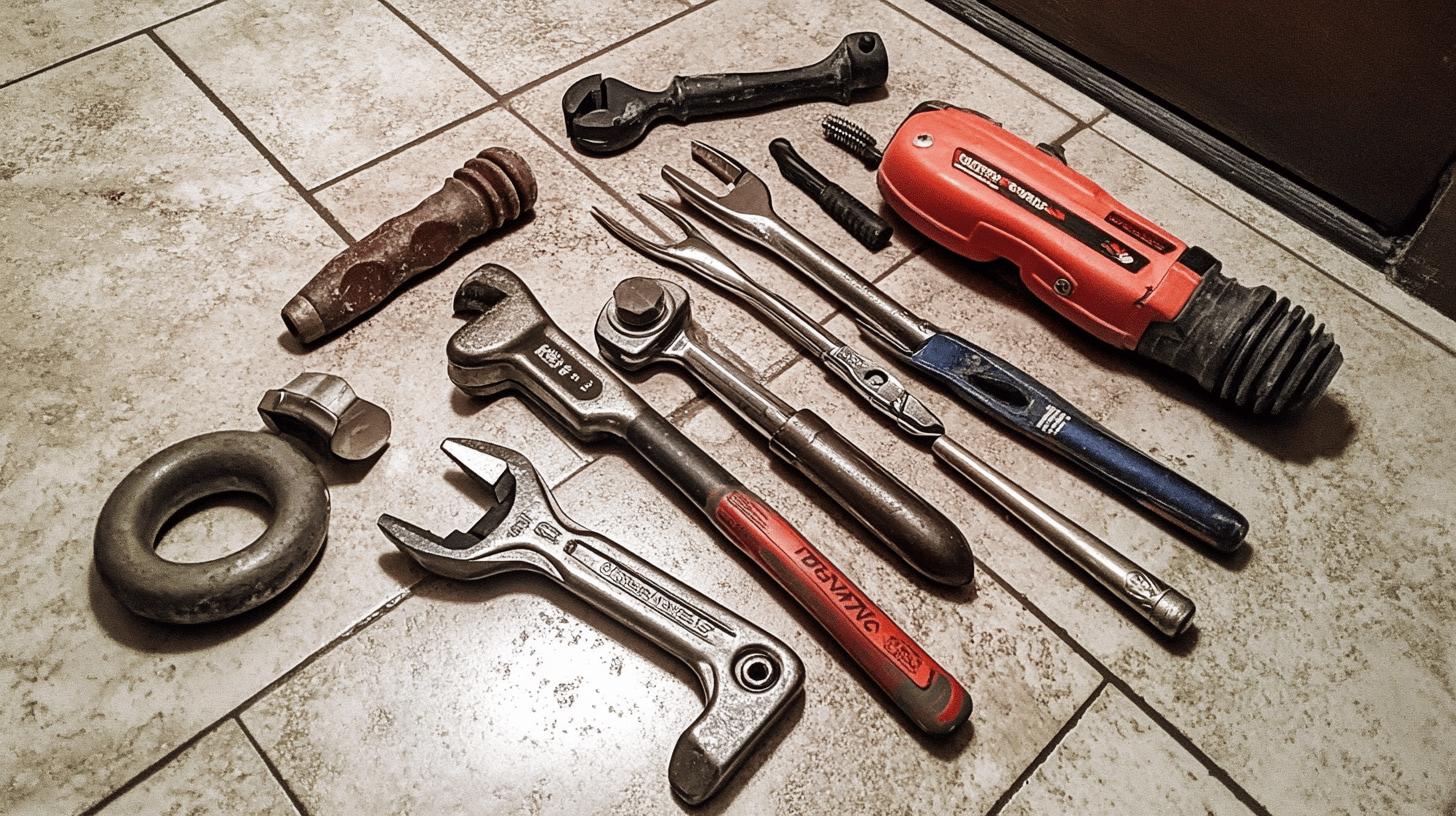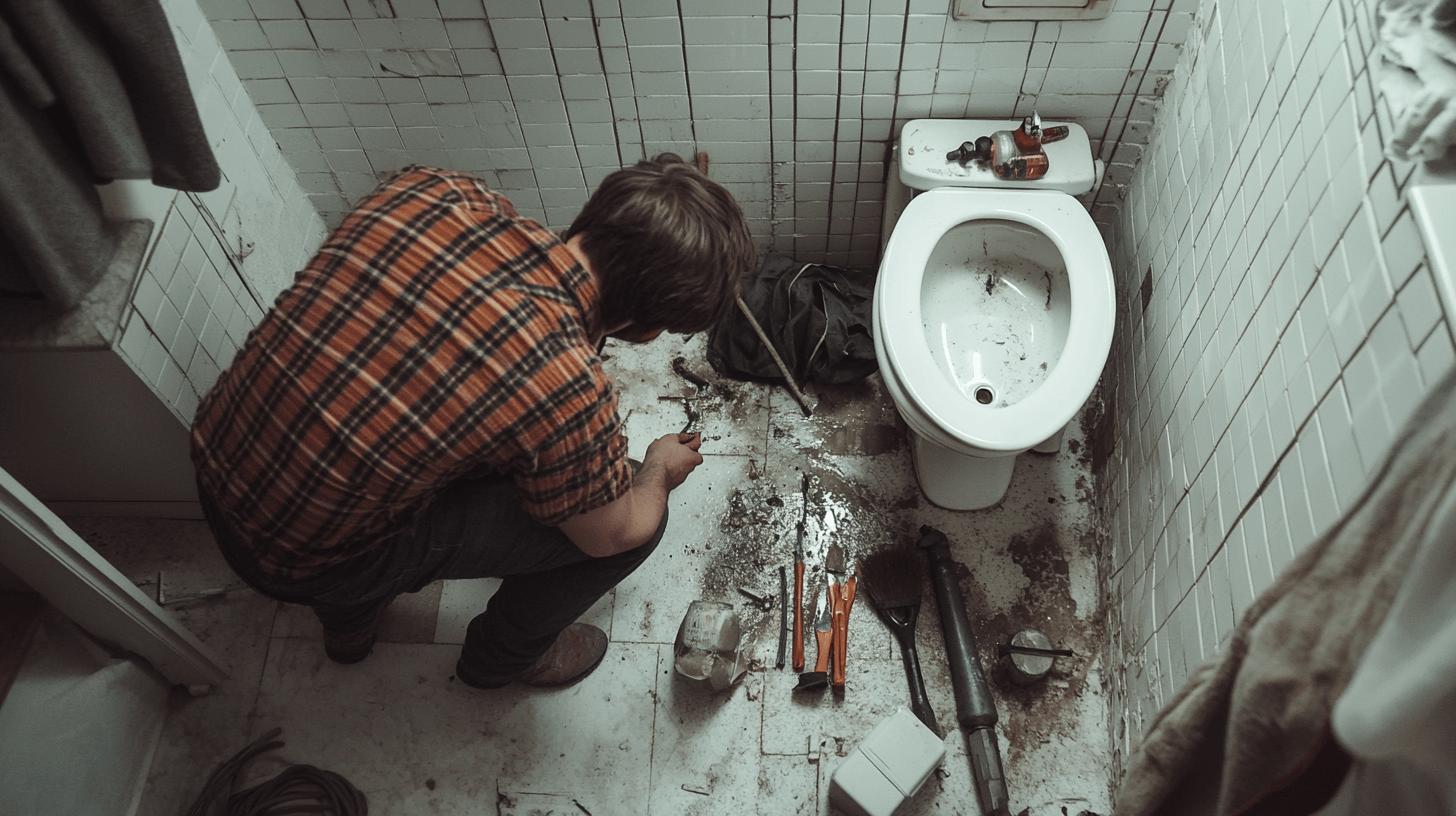TL;DR:
- Flushing Issues: Caused by low water levels, a warped flapper, or a tangled lift chain.
- Common Clogs: Include too much toilet paper, non-flushable wipes, or foreign objects.
- Water Level: Should be an inch below the overflow tube; ensure the valve is open.
- Fixing Steps:
- Check water level in the tank.
- Inspect and replace the flapper if necessary.
- Tighten lift chain.
- Clean inlet holes.
- Examine fill valve.
- Use plunger or auger for clogs.
- Tools Needed: Plunger, toilet auger, adjustable wrench, screwdriver, pocket mirror, wire coat hanger.
- Maintenance: Check monthly for leaks and buildup to prolong toilet lifespan.
Ever been stuck staring at a toilet that barely flushes, leaving stuff behind? It’s not just annoying—it could be a sign of bigger problems. The issue could be anything from low water in the tank to clogs or mechanical problems. In this article, we’ll walk through how to fix these common issues. Whether it’s adjusting the water level or fixing a flapper, you’ll learn how to get your toilet working smoothly again.
Troubleshooting a Toilet That Doesn’t Fully Flush
If your toilet isn’t flushing right, it might be slow or leave water and waste behind. This can be gross and annoying, usually pointing to a problem. Low water in the tank is often the cause since it can’t create enough pressure to fully flush. Another clue is a loose handle that doesn’t trigger the flush properly, suggesting something’s wrong inside the tank.
Most flushing problems come from inside the tank. The flapper, a rubber seal, could be bent or not sealing right, letting water leak out early. There might also be an issue with the fill valve, which controls how much water enters the tank. If the chain that connects the flapper to the handle is too long or tangled, the flapper won’t lift enough to flush fully.
Clogs can also cause flushing problems, and common culprits include:
- Too much toilet paper
- Non-flushable wipes
- Sanitary products
- Small toys or objects accidentally flushed
- Hair and debris buildup
Figuring out what’s wrong before trying to fix your toilet is really important. It helps you know if it’s just a simple clog or a bigger issue with the parts inside. This saves you time and effort by making sure you’re fixing the right problem. Sometimes, it’s better to call a plumber for bigger issues, so you get a lasting fix and avoid more damage.
Common Causes of Partial Flush Problems

If your toilet isn’t fully flushing, it could be because the water level in the tank is too low. This happens if the water valve is partially closed, limiting how much water is available for a flush. To flush properly, the water should be about an inch below the top of the overflow tube. Without enough water, the toilet doesn’t have enough pressure to clear everything out.
Mechanical issues can also cause weak flushes. If the flapper is bent or damaged, it won’t seal the tank correctly, letting water leak out early. The lift chain that connects the handle to the flapper might also be too loose, stopping the flapper from lifting all the way and preventing a full flush.
| Issue | Description |
|—————————|—————————————————————————-|
| Water Level | Low water level due to valve issues reduces flushing power. |
| Flapper | Warped or bent flapper prevents a proper seal, causing incomplete flushing. |
| Lift Chain | Excess slack in the lift chain hinders the flapper’s full movement. |
| Other Mechanical Issues | Additional mechanical failures can disrupt flush efficiency. |
Step-by-Step Guide to Fixing a Toilet That Won’t Fully Flush
To figure out why your toilet isn’t fully flushing, start with the basics. Check if the water level in the tank is about an inch below the overflow tube, and make sure the water valve is fully open if the level is too low. Also, check the handle and lift chain—if the handle is loose or the chain has too much slack, adjusting them might solve the issue.
If those checks don’t fix it, you might be dealing with a clog. Try using a plunger first, making sure it covers the drain completely, and push firmly to clear minor blockages. For deeper clogs, use a toilet auger. Insert it into the toilet and turn the handle to break up any tough blockages. An auger can reach farther into the pipes than a plunger, making it useful for tougher clogs.
Once initial checks and unclogging efforts are completed, follow these steps to further improve flush performance:
- Check and Adjust the Water Level: Ensure the float keeps the water at the right level in the tank.
- Inspect the Flapper: Replace it if it’s warped or not sealing well.
- Tighten the Lift Chain: Adjust any slack to make sure the flapper lifts fully.
- Clean Inlet Holes: Use a small brush to remove mineral deposits under the rim.
- Examine the Fill Valve: Ensure it’s working well and not stuck.
- Check for Clogs in the Drain: Use a snake or auger for a thorough clean.
- Inspect for Leaks: Ensure all seals are intact to prevent water from escaping.
After making adjustments, test the flush by flushing several times. Watch to see if the water fills and empties properly. If the toilet still isn’t flushing right, go back over each step to make sure nothing was overlooked. If the problem continues, it might be time to call a plumber to check for more serious issues.
Tools and Materials Needed for Toilet Repairs

Having the right tools is key for fixing your toilet yourself. The right equipment makes the job easier and helps ensure the repairs last, preventing future problems. Whether you’re dealing with a clog or a mechanical issue, it’s smart to be ready with a good set of plumbing tools. Investing in a toilet repair kit can save you time since it has everything you need in one place. For bigger repairs, consider using professional-grade tools for better durability and performance.
- Plunger: Essential for clearing minor clogs and ensuring smooth water flow.
- Toilet Auger: Useful for reaching deeper clogs beyond a plunger’s reach.
- Adjustable Wrench: Needed for tightening or loosening bolts and nuts.
- Screwdriver: Handy for adjusting screws within the toilet tank or replacing parts.
- Pocket Mirror: Helps to inspect hard-to-see areas for clogs or mineral buildup.
- Wire Coat Hanger: Can manually remove obstructions or debris from pipes.
These tools are essential for a successful DIY toilet repair, giving you what you need to handle different problems efficiently.
Preventative Maintenance Tips for Reliable Toilet Function
Regular inspections and cleaning are key to keeping your toilet working smoothly. Check it at least once a month to catch issues like leaks, mineral buildup, or worn parts early. This helps prevent bigger problems and reduces the chance of emergency repairs.
For maintenance, clean the inlet holes with a small brush or a wire hanger to clear out any buildup under the rim. This keeps the water flowing properly during flushes. Also, keep an eye on the water level—it should be about an inch below the overflow tube for a full flush.
Preventative maintenance pays off in the long run. It reduces wear and tear, extends the life of your toilet, and saves you money on repairs. Plus, it helps conserve water and keeps your bathroom running without interruptions.
Final Words
Fixing a toilet that doesn’t fully flush usually begins with identifying common symptoms. Mechanical problems, like issues with the flapper or fill valve, can interfere with flushing. To tackle these problems—whether they’re caused by low water levels or clogs—you need to know what might be causing them. Having the right tools and keeping up with regular maintenance helps keep your toilet running smoothly. By following these steps, you can confidently address any flushing issue. Staying proactive not only boosts your toilet’s performance but also extends its lifespan.
FAQ
Why is the toilet not flushing all the way?
A toilet not flushing completely often stems from a partially filled tank, clogs, or mechanical problems in the tank. Addressing these issues can help achieve a full flush.
How can I make my toilet flush stronger?
To make your toilet flush stronger, ensure the tank is full, check and adjust the water level, and clean the inlet holes for better water flow.
What should I do if the toilet flushes but poop stays?
When poop remains after flushing, inspect for clogs or blockages. Cleaning all parts of the toilet, including jet holes and the trap, can enhance flushing effectiveness.
Why won’t my toilet flush, and water just rises?
A rising water level often indicates a blockage. Use a plunger or toilet auger to remove clogs in the drain.
How do I fix a toilet that won’t flush completely?
Fix a toilet that won’t flush by checking tank components. Look for issues with the flapper, fill valve, and ensure no blockages are preventing water flow.
How do I handle a toilet that flushes slowly and incompletely?
Check for partial obstructions or improper tank water levels. Adjust the flapper chain and clean inlet holes for a swifter, thorough flush.
How to fix a toilet that doesn’t flush all the way unless you hold it?
If the toilet requires holding to flush, adjust the flapper chain for a tighter seal and ensure the flapper is aligned correctly.
What could be causing the toilet not to flush poop despite multiple tries?
Persistent flushing difficulties can be caused by clogs or an ineffective flush mechanism. A comprehensive cleaning of the pipes and components may be necessary.

